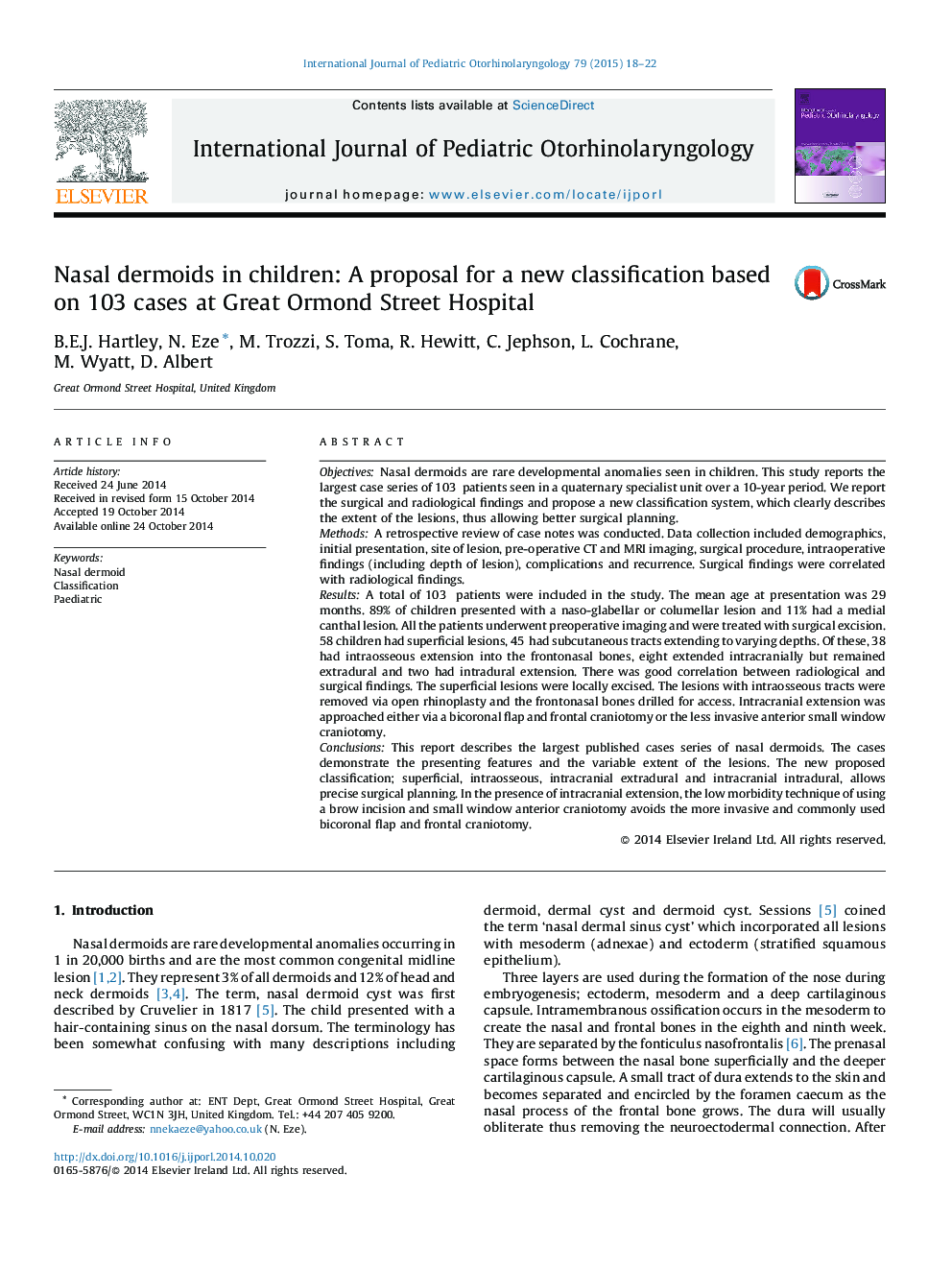| Article ID | Journal | Published Year | Pages | File Type |
|---|---|---|---|---|
| 6213465 | International Journal of Pediatric Otorhinolaryngology | 2015 | 5 Pages |
ObjectivesNasal dermoids are rare developmental anomalies seen in children. This study reports the largest case series of 103 patients seen in a quaternary specialist unit over a 10-year period. We report the surgical and radiological findings and propose a new classification system, which clearly describes the extent of the lesions, thus allowing better surgical planning.MethodsA retrospective review of case notes was conducted. Data collection included demographics, initial presentation, site of lesion, pre-operative CT and MRI imaging, surgical procedure, intraoperative findings (including depth of lesion), complications and recurrence. Surgical findings were correlated with radiological findings.ResultsA total of 103 patients were included in the study. The mean age at presentation was 29 months. 89% of children presented with a naso-glabellar or columellar lesion and 11% had a medial canthal lesion. All the patients underwent preoperative imaging and were treated with surgical excision. 58 children had superficial lesions, 45 had subcutaneous tracts extending to varying depths. Of these, 38 had intraosseous extension into the frontonasal bones, eight extended intracranially but remained extradural and two had intradural extension. There was good correlation between radiological and surgical findings. The superficial lesions were locally excised. The lesions with intraosseous tracts were removed via open rhinoplasty and the frontonasal bones drilled for access. Intracranial extension was approached either via a bicoronal flap and frontal craniotomy or the less invasive anterior small window craniotomy.ConclusionsThis report describes the largest published cases series of nasal dermoids. The cases demonstrate the presenting features and the variable extent of the lesions. The new proposed classification; superficial, intraosseous, intracranial extradural and intracranial intradural, allows precise surgical planning. In the presence of intracranial extension, the low morbidity technique of using a brow incision and small window anterior craniotomy avoids the more invasive and commonly used bicoronal flap and frontal craniotomy.
